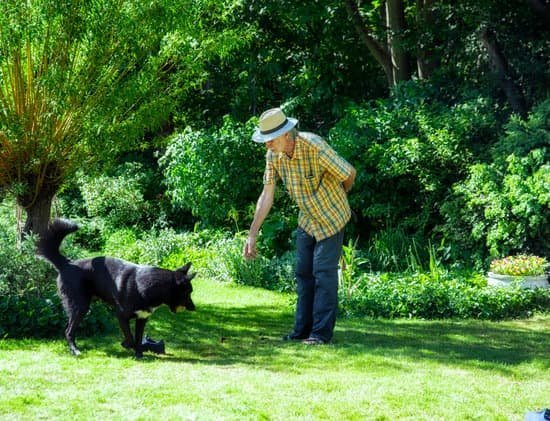Introduction
Protecting your home and family is of utmost importance, which is why it’s crucial to train your dog how to guard your house. Training a dog to alert and protect you can offer both physical and psychological security for your family. This type of training can also make sure that your furry friend doesn’t become aggressive or overly protective, making it an effective way to ensure the safety of everyone in the home. When done correctly, the rewards are great.
So, let’s take action together by learning how you can train your pet to effectively defend against any potential threat against your abode and loved ones! We will understand the basics of protection training, its safety protocols, as well as ways on how you can efficiently teach your pooch this valuable skill!
Gathering Necessary Resources
Training your dog to protect your house will require you to gather several important resources. You’ll need to equip yourself with treats and rewards that you can give your dog as a reward for good behavior and recognizing a threat or intruder. Commands like “stay,” “down,” and “protect,” which you can use to direct the dog’s behavior. You may also need additional training aids such as muzzles, choke collars, clickers, or click-and-treat pouches. Having appropriate tools on hand will help increase your chances of successfully training your dog to protect your home. Additionally, find a professional trainer who is familiar with protection training so they can provide guidance and educate you in the best ways to train your pup. Making sure you have all the necessary resources before beginning any kind of training program is essential for ensuring its success.
Developing a Plan
Creating a plan for teaching your dog how to be an effective protector of your home is essential. First, assess the breed and temperament of your dog. Consider their age, energy levels, and comfort with strangers or loud noises. Certain breeds are more predisposed to being natural guard dogs such as Dobermans or German Shepherds. Knowing this information can help craft a tailored plan for your dog.
Once you have identified potential challenges that may arise or need to be taken into account when formulating the plan, it’s time to outline what you will be teaching your dog and organizing it into distinct steps. An example of a plan may entail first teaching basic obedience commands such as “sit” and “stay” in the yard or other areas where training can take place away from distractions. Once those commands are mastered efficiently, progressing onto teaching “alert” behaviors like barking at strangers on command may come next, then moving onto more advanced drills like defending against a simulated attack to increase their protective instincts when around children or family members.
Furthermore, consider setting manageable deadlines throughout the training process so as not to rush. If your pup is having trouble with any portion of the training process, provide reinforcement through positive reinforcement techniques such as treats or verbal praise if they correctly perform the desired behaviors rather than punishing them for incorrect behavior. Lastly, make sure all family members are involved in the training process so they understand and teach consistency in their commands when working with the pup.
Establishing Rules
When training your dog to protect your home, it is important to establish rules and boundaries. This will help you to communicate expectations to your pet and provide structure to their lives. Start with the most basic commands, such as ‘sit’, ‘stay’ and ‘come’. When first teaching these commands it is best to break down each one step by step and to use positive reinforcement, rewards such as treats or praise will help your pup learn faster. Set clear expectations for your pup using commands consistently during training sessions and at other times throughout their day.
For example when you give the command “sit” make sure you wait for them to sit before releasing a treat or providing praise. Always rewarding good behaviors consistentely until learned will ensure your pup knows exactly which actions are expected of them. Additionally it is important that you remain consistent in enforcing the boundaries set so that there are no ambigious expectations that could be frustrating for both owner and dog alike. Maintaining strong communication while setting rules should lead to a safe and secure home!
Implementing Training
When training your dog to protect your house, it is important to ensure that you start early and use consistent techniques. Make sure that during the training sessions, you remain calm and patient. A positive attitude will help reinforce desired behavior in your pup.
Some tips for effective training include breaking the task into smaller, more manageable steps and rewarding with treats and praise for good behavior. Additionally, create clear boundaries for your dog; this will help them understand your expectations and lead to better compliance with commands. When it comes to verbal cues, remember to use simple words like “stay” or “come” rather than long sentences.
You can check whether your pup is making progress by monitoring their response time when given a command or checking if they are following through on instructions consistently. Over time as training proceeds and as your pup starts developing basic obedience skills such as coming when called, crouching on command etc., you can gradually introduce protection drills such as teaching them a proper bark alert whenever someone approaches the door or walks around the property line.
Reinforcing the Training
One important step when training your dog to protect your home is to reinforce the training. This means providing rewards, corrections and adjusting the intensity of the commands you provide. Rewards are positive reinforcements that are usually in the form of treats or petting. These rewards will help encourage your dog to do as you ask and remember what they have been trained to do. Corrections should be delivered immediately after the dog fails to comply with a command and can include loud verbal cues like “no” or “wrong”, or even physical ailments such as pulling on the leash. As for adjusting the intensity of commands, commands should become more urgent depending on the level of protection you desire from your dog. For instance, if seeking increased protection from strangers, a louder and more urgent voice may be needed. Additionally, setting boundaries around what people can enter a space (i.e., front porch) may prove useful as well. Finally, regular practice sessions (at least once per week) is essential so your pup remembers and reinforces their learned behavior(s).
Testing the Training
Testing the training is an important part of the process in order to ensure that your dog’s protection of your home is effective. A few ways that you can test the training are through using scenarios and drill simulations which involve putting your dog in scenarios that emulate real-life situations and seeing if it reacts appropriately. Practical drills, such as examining how well your dog obeys commands under pressure or how quickly it responds to cues can also be useful testing tools. Finally, another way to track progress is by utilizing real-life simulations, where you mimic situations they will likely encounter while protecting your home at different levels of intensity. This allows you to evaluate their ability to staunchly protect the house when it may be necessary. Additionally, having records and tracking notes on results and reaction times between tests can provide data that can be used to make improvements if needed.
Maintaining the Training
In order to maintain the training you have given your dog in order to protect your house, periodic reviews are a must. Investing in additional training classes with an experienced professional is one way of doing this, which will help your dog keep refreshed and confident in their protective role. You can also reinforce their positive behaviors on a daily basis by verbally praising them and rewarding them with treats whenever appropriate.
Moreover, it’s important to continue learning more about the behaviors conducive to a strong protective nature, as they may differ from other commands or activities you’ve taught your dog before. Knowing what techniques are proven effective will ensure that you are best equipped to respond accordingly and have the most successful outcome when teaching your dog. Last but not least it’s important to be aware of any potential pitfalls such as overdoing the intensity of their protective actions, making sure that awareness does not turn into aggression towards family or friends who visit. Make sure that when training takes place, there is always a safe space for guests so as not to create any anxiety or fear from either humans or dogs alike.
Conclusion
Training your dog for protection is a noble goal, as it is ultimately about ensuring the safety of your family and property – but it needs to be done safely and responsibly. Positive reinforcement should always be used as it will encourage your pup to associate guarding with rewards! This can also help promote a healthy bond of trust between you and your pet. In addition, training can provide useful new skills, abilities and confidence to both you and your pet. Ultimately, training your dog to protect can increase the level of security in and around your home while providing better peace of mind.

Welcome to the blog! I am a professional dog trainer and have been working with dogs for many years. In this blog, I will be discussing various topics related to dog training, including tips, tricks, and advice. I hope you find this information helpful and informative. Thanks for reading!





